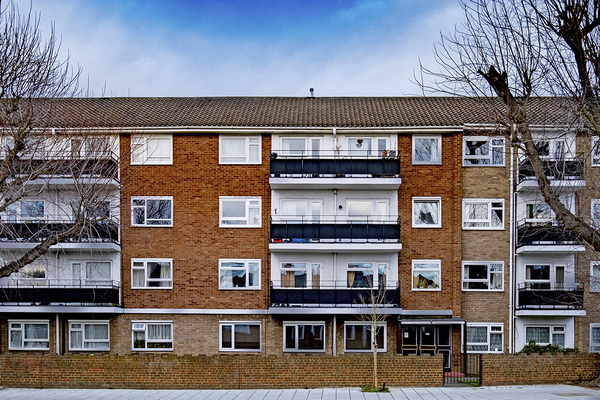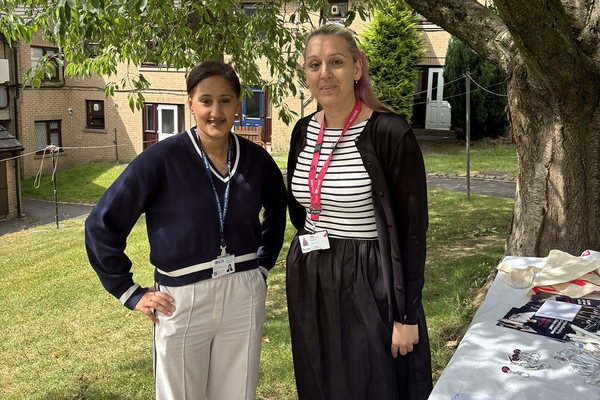You are viewing 1 of your 1 free articles
How to overhaul the patch system
In 2023, South Tyneside’s housing department restructured its approach to place-based housing support. But it is not just as simple as making patches smaller. John Robertshaw, the council’s assistant head of service – project management, explains
Key learnings
- Think about what resource and staffing you already have: is there a way it could be used more effectively?
- Patch workload isn’t only about the number of homes. Consider other factors such as anti-social behaviour, tenants with extra support needs and arrears.
- Increasing numbers of households require high levels of support. A separate, specialised team can focus on the more complex cases.
- How can your structures line up with place-based forums and working groups that already exist? This can help when it comes to collaborating with other departments, agencies and organisations.
- Staff will need training and support with these changes, and there will likely be a period of adjustment.
- What are your measurables? Track the results and tweak the approach as needed, listening to the input of residents and staff.
In October 2023, housing management and tenancy sustainment services were systematically changed at South Tyneside Council, which manages around 17,000 homes. A number of drivers were behind the change, namely increased regulation and scrutiny from the Regulator of Social Housing, the consumer standards and tenant satisfaction measures, and the increased and now statutory powers of the Housing Ombudsman Service, along with a desire to improve the customer and staff experience.
The redesigned service approach aligns to a number of recommendations in The Better Social Housing Review 2022, with a focus on tenancy sustainment. We wanted to develop a proactive local presence, which fosters greater multi-agency working.
There was the recognition that housing officers’ patch sizes were too big and there were challenges with the increasing number of complex cases. The result was that we were often only able to provide a reactive service to a crisis rather than work proactively with the aim of preventing the crisis from occurring.
To deliver a customer-focused proactive service, more frontline housing officers were required, with greatly reduced patch sizes. The challenge was: how do we do this with our current resources?
We decided to bring the customer-facing housing management teams and the office-based income teams together to create a new, holistic housing management and tenancy sustainment service. Bringing these two specialist teams together created a significant increase in frontline, customer-facing housing officer roles, which were serving the community.
Connecting with place-based frameworks
In South Tyneside there are five Community Area Forums (CAF) based on a geographical split. The CAFs are open meetings with local councillors, housing and council officers, and others in the local community to discuss changes that are happening and local issues. The decision was made to create five housing management teams with the same geographical split as the CAF areas. This allowed for ease of working with local councillors and other officers.
In addition to the five housing management teams, a specialist tenancy sustainment team was created to provide intensive, tailored support for our tenants who needed the most complex levels of help.
Reducing patch sizes
We wanted to reduce housing officers’ patch sizes to allow them to build relationships with our tenants and the wider local community. Although South Tyneside is a geographically small area, it is diverse and faces various challenges and barriers. As such, when patches were reviewed, it was important to look at a range of issues and not base the new patches purely on the number of properties.
Patch splits were based on workload generated, rather than just property numbers. Using spreadsheets with data from several different systems, a wide range of factors were built into establishing the new patches, including:
- Anti-social behaviour
- Identified extra support needs
- Identified disabilities
- Rent arrears
- Missed rent payments
- Tenancy enforcement action
- Universal Credit claimants
- Tenancy cases
- Garages
Utilising this insight allowed for new patches to be created based on workload, not just on the number of properties. Although each patch size varies, the average size for each full-time housing officer is now between 350 and 400.
Case numbers for the specialist tenancy sustainment team are less than 20 per officer, allowing them the time and opportunity to provide intensive, tailored support for our tenants with the most complex needs.
Staff training
Bringing two specialist teams together to create a new holistic method of service delivery was not without its challenges. All staff within the service were required to learn and develop new skills and knowledge. A comprehensive, in-house training programme was developed to upskill staff and develop the new way of working.
To support the training programme and the development of the new teams, champions were created within the service. Champions were selected based on their knowledge and experience and their ability to communicate and work effectively with others within the team and the wider service.
A ‘buddying’ system was also established where housing officers were paired with another officer based on knowledge, experience and complementary skills. This enabled on-the-job training, as well as the more formal classroom-based learning.
Results
We are now 18 months into the new way of working. We are constantly reviewing and tweaking our ways of working to ensure it is fit for purpose and achieves the desired outcomes for both tenants and staff, but we are seeing the benefits already.
The percentage of tenancies that have failed within the first 12 months has reduced to 1.3%, down from 2.6%.
We are seeing the benefits of our housing officers having smaller patch sizes and being able to spend more time on their patch building relationships with tenants and the local community.
Since the launch of the new way of service delivery 18 months ago, our officers have got behind the doors of two-thirds of our South Tyneside Council housing stock. Officers use these visits to check on the safety and well-being of our tenants, identify any issues, identify any repairs that are needed and take ownership to ensure any actions are followed up on.
We also use these visits, along with other methods, to ensure we capture customer profiling data. The more relevant and accurate information we are able to collect, the more we can do to tailor services around what the tenant needs, rather than adopting a one-size-fits-all approach to housing management and tenancy sustainment.
We continue to review our service delivery model, which is currently going through an internal audit. Running alongside this internal audit, our tenant scrutiny panel are about to commence a deep-dive review of the new model. Outcomes and recommendations from both the audit and deep dive will be built into the new service to ensure we continue to evolve and deliver effectively and efficiently for our tenants and staff.
Subscribe to Inside Housing Management and sign up to the newsletter

Inside Housing Management is the go-to source for learning, information and ideas for housing managers.
Subscribe here to read the articles.
Already have an account? Click here to manage your newsletters.
Latest stories








